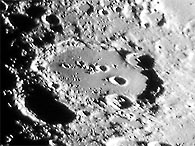
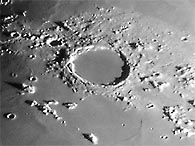
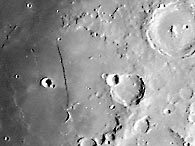
This page has been accessed times.
NEW! February 21, 2002. The three lunar pictures below were obtained with an Olympus C-2020 digital camera afocally coupled to a C8 telescope equipped with a 17 mm eyepiece. The camera was attached to the telescope with an adapter of my own design and manufacture. Details about the adapter as well as more images will be published later.
 |
 |
 |
The pictures below represent the best astro images that I currently have to show. I'm working on a better way to present them, but in the meantime this will have to do.
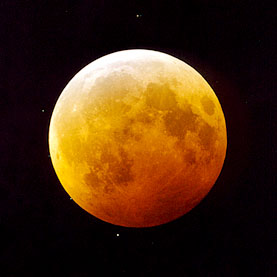 |
 |
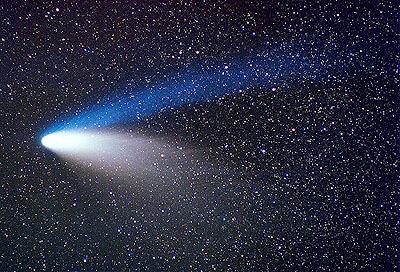 |
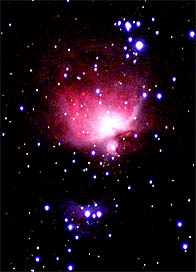 |
|
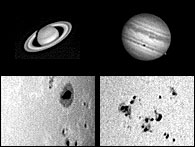 |
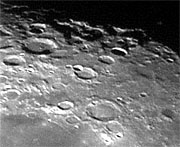 |
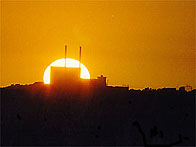 |
Please check out my dedicated Hale-Bopp page for much better pictures than those below
Yes! Comet Hale-Bopp is here in all it's glory. I've shot a series of pictures and below I present the best of them.
Please keep in mind that all images were scanned using a low cost hand scanner. The comet images in particular suffer greatly from the scanner's inability to cope with dark backgrounds and the printed pictures from the photolab look much better.
A wide-field view of comet Hale-Bopp shot on March 8 1997 at 20:40 local time. Kodak's excellent Ektacolor Pro Gold (GPY) 400 film was exposed for 4 minutes. I used a 135 mm telephoto lens stopped down to f/4. The shadow in the lower right corner is a nearby tree.
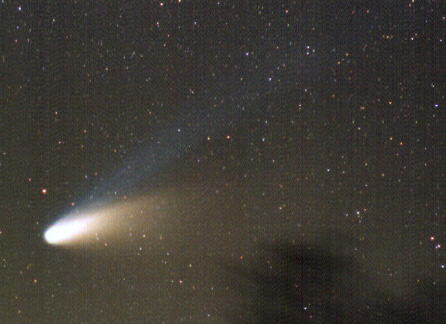
This picture of Hale-Bopp was obtained at a semi-dark site just outside Svalöv in southern Sweden on March 8 1997 at 19:53 local time. The lens had a focal length of 400 mm and was used wide open at f/5,6. Same film as above but this frame was exposed for 8 minutes. The yellow dust tail shows up quite nicely but the fainter blue ion tail was almost completely lost in the scan.
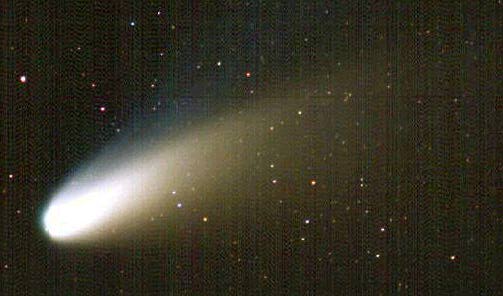
Picture of comet Hyakutake. The camera was guided on the comet nucleus which explains why the background stars show slight trailing. This picture was taken from downtown Svalöv in the south of Sweden so the sky background is unfortunately rather bright. Exposure data will follow shortly, i e as soon as I find my notes!
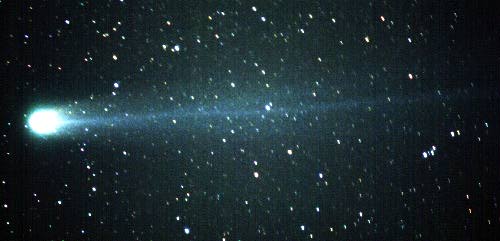
Well, this is probably one of the most popular objects among astrophotographers so naturally I just had to put an image of M42, the great nebula in Orion, on my home page as well. Lens: 400 mm, f/5,6. Film: Kodak Ektacolor Pro Gold 400. Exposure time: 8 minutes. In order to record the fainter outer part of the nebulosity the exposure had to last several minutes, thus greatly overexposing the central region. As always, you can't have it all!

The following is a picture of the Russian Space Station Mir as seen from Lomma in southern Sweden. At the bottom of the image you can see the bright lights of the city of Malmö.

The sequence below was captured during the partial solar eclipse of October 12, 1996. The cloudy sky obscured the sun and this had quite an impact on the pictures. The "six pack" shown here represents the best shots I got. After about 16:37 local time the clouds completely covered the sun and I had to call it a day. However, the majority of Swedish observers didn't even get a glimpse of the eclipse due to bad weather, so I was actually quite lucky.
All images were obtained with a 400 mm lens and a 2X teleconverter, yielding an effective focal length of 800 mm. The Kodak Gold 200 film was exposed for 1/1000 s and the lens was stopped down to f/45. No neutral density filter was needed because of the high level of attenuation in the clouds (well, at least they were good for something :-)).






At maximum, about 68% of the sun was obscured by the moon. This occurred at 16:23 local time and can be seen in picture number five above.
I have also compiled an animated version of the eclipse

All images copyright © 1996, 1997, 1998, 2000, 2001 and 2002 by Bengt Ask. If you'd like to use any of these pictures, please contact me by e-mail, bengt@df.lth.se.